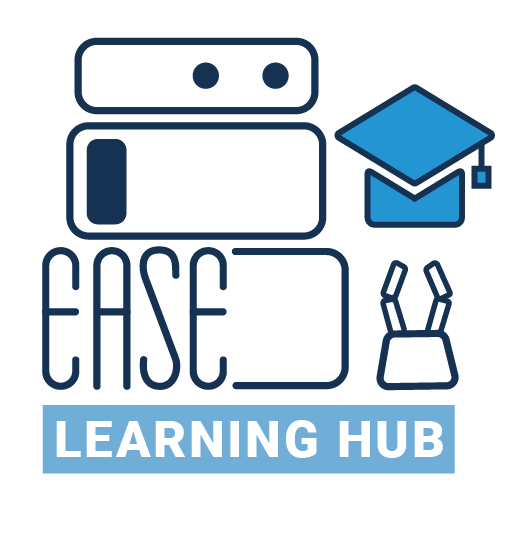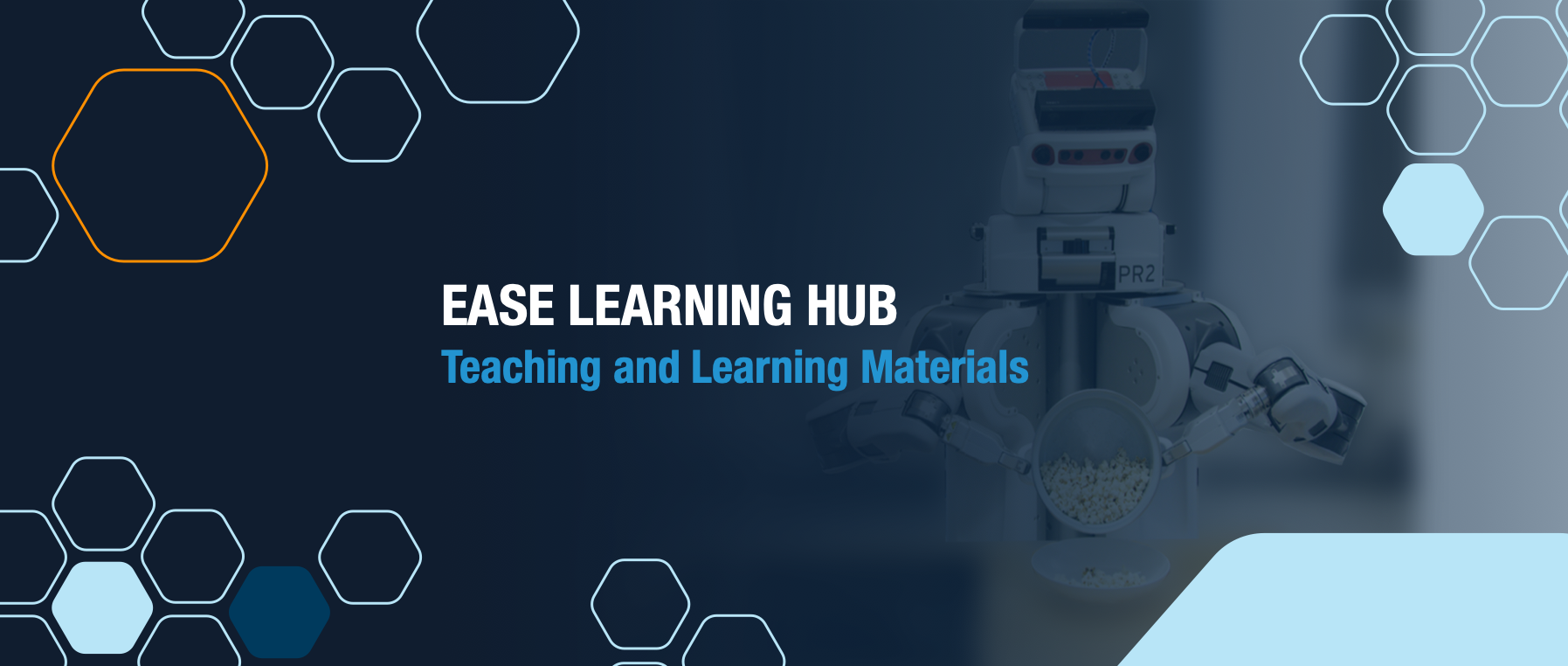Part 3: In this presentation Axel Ngonga explains with the help of a cooking robot the interesting approach of the class expression learning with multiple representations.
Integrating advanced skills into robotic systems for reliable autonomous operation is a pressing challenge. Current robot software architectures, many based on the 3-layers paradigm, are not flexible to dynamically adapt to changes in the environment, the mission or the robot itself (e.g. internal faults).
In this talk, I will motivate the application of systems engineering in robotics to address this challenge.
I will present our results leveraging systems engineering knowledge for automatic reasoning to adapt the robot software architecture at runtime, with examples in mobile manipulators and underwater robots.
To conclude, I will briefly present our upcoming projects, CoreSense and METATOOL, where we will develop hybrid cognitive architectures with deep understanding and self-awareness capabilities, hopefully resulting in robots that are more flexible, reliable and explainable, and that are capable of tool invention, respectively.
In this course, David Vernon presents the 10th module of the "Design & Implementation of Cognition-enabled Robot Agents" series. The learning goals of this module enables you to:
- Describe the three paradigms of cognitive science
- Explain the characteristics of cognitive architecture in each of the three paradigms
- Describe the key components of a hybrid cognitive architecture
- Sketch the design of the ISAC and CRAM cognitive architectures and explain how they operate
In four lectures cognitive architectures are explained and how cognitive agents can use these architectures.
We acknowledge the support from the KI-Campus Projekt funded by the German Federal Ministry of Education and Research.
THE SYNTAX OF ACTION
Abstract Understanding human activity from a video is a fundamental problem in today’s Computer Vision and Imitation Learning. The video discusses the issue of the syntax of human activity and advances the viewpoint that perceived human activity first needs to be parsed, just as in the case of language. Using these ideas then the video proposes the Ego-OMG framework. Egocentric object manipulation graphs are graphs that are extracted from a basic parsing of a video of human activity (they represent the contacts of the left and right hand with objects in the scene) and they can be used for action prediction.
Paper: https://arxiv.org/abs/2006.03201
Yiannis Aloimonos is a Professor of Computational Vision and Intelligence at the Department of Computer Science, University of Maryland, College Park, and the Director of the Computer Vision Laboratory at the Institute for Advanced Computer Studies (UMIACS). He is also affiliated with the Institute for Systems Research and the Neural and Cognitive Science Program. He was born in Sparta, Greece, and studied Mathematics in Athens and Computer Science at the University of Rochester, NY (PhD 1990). He is interested in Active Perception and the modeling of vision as an active, dynamic process for real-time robotic systems. For the past five years, he has been working on bridging signals and symbols, specifically on the relationship of vision to reasoning, action, and language.
Path planning is a core problem in robotics. Lydia Kavraki developed a method called the Probabilistic Roadmap Method (PRM), which caused a paradigm shift in the robotics community. The approach introduced randomization schemes that exploited local geometric properties and produced efficient solutions without fully exploring the underlying search space.
Lydia E. Kavraki is the Noah Harding Professor of Computer Science, professor of Bioengineering, professor of Electrical and Computer Engineering, and professor of Mechanical Engineering at Rice University. She is also the Director of the Ken Ken- nedy Institute at Rice. In robotics and AI, she is interested in enabling robots to work with people and in support of people.
There’s a common misconception that decisions made by computers are automatically unbiased – as opposed to those made by humans. However, Chad Jenkins pointed out many ways in which AI can fail to deliver fair and reasonable results. He pointed out what needs to be done in AI to get the intellectual domain right and how the technology and understanding researchers generate can have a positive impact on the world.
Chad Jenkins is a Professor of Computer Science and Engineering at the University of Michigan as well as the Associate Director of the Robotics Institute and the Editor-in-Chief of the journal “ACM Transactions on Human-Robot Interaction”. His research interests include mobile manipulation, computer vision, interactive robot systems, and human-robot interaction.
Jan Andersen is Head of Research Office at the University of Southern Denmark. He has a background in Computer Science and Danish Language. He has been working with research strategy and research planning. He was involved in building up four very successful research support units. He was an advisor for Rectors of the Danish Technical University, University of Copenhagen, and the former Royal Veterinary and Agricultural University. He was responsible for the cross-faculty follow-up of the Danish university merger in 2007. He was Head of the Nordic Association of University Administrators Working Group for Research Administrators. Jan Andersen is an expert on the EU framework programs. Jan Andersen was a Board Member and co-founder of the Danish Association of Research Managers and Administrators. Jan Andersen was hosting the 2009 Annual Conference of European Association of Research Managers and Administrators, EARMA and elected Chairman for EARMA 2010-2013, and board member until 2018. From 2013-2018 Jan Andersen was Chair of the COST BESTPRAC Targeted Network, with more than 650 participants from 41 countries. Jan Andersen is the co-author of “Research Management – Europe and beyond”. Presentation abstract: The changing environment of research towards “Open Science”, competitive and collaborative research projects, influences the careers of young researchers. Competition, quality and the necessity of meeting societal challenges and other “non-academic” requirements in the pursue of funding highlight the need for external advice and counseling. Here comes your local research manager and administrator to rescue. Research managers and administrators facilitate the research process from the idea to the realization of the research project. We can be a sparring partner on your career, help you identify funding, and explain – sometimes even solve the non-academic parts in research application e.g. impact, gender issues, open science, and ethics. This presentation discusses the emergence of professional support staff, and how you can benefit from involving your local research manager and administrator.
The tools available at our disposal for solving some of the really hard problems our society is facing today are old, inadequate, and need to be deprecated. Everyone is looking to Artificial Intelligence based solutions like it’s the next gold rush, without understanding how Machine Learning actually works. We’re pumping massive amounts of data into these systems, without realizing that this data came before Artificial Intelligence was a thing, and even before the Internet or computers existed: 2D images are actually just digital representations of something that was available before in analog form. Someone needs to pause, zoom out, and take a look first and foremost at the problems that we need to solve, identify and analyze them, and only then derive complete technical solutions that might or might not involve the current generation of Machine Learning en vogue, but most importantly, might indicate that new types and formats of data, whether visual or otherwise, need to be created. And the field that made significant progress there is robotics, where mapping and identifying the world with high accuracy was an absolute requirement for the stability and performance of a machine moving into our world. However, these concepts such as 3D visual representations have not yet been translated fully to scale and made de facto standards for other more common applications. In this talk, we’re taking a trip down memory lane at some of these concepts, and discussing how open source platforms such as the Point Cloud Library (PCL) have contributed to the proliferation of new visual understanding technologies. We’re also taking a look at Fyusion, which attempts to redefine the meaning of “scalable 3D visual formats”, and has created the first comprehensive and scalable technology stack for capturing photorealistic 3D spatial models of the real world using a single camera, built with Visual Understanding in mind.
In this talk, I review the Soar cognitive architecture, including the motivation for cognitive architecture, the history of Soar, the applications it has been applied to, and our current research on Interactive Task Learning. I then discuss Soar from the standpoint of an open-source research project: positives, negatives, and challenges.
This course is published by David Vernon in 2020. The course "covers both the essentials of classical robotics (mobile robots, robot arms for manipulation, and robot vision) and the principles of cognition (cognitive architectures, learning and development, prospection, memory, knowledge representation, internal simulation, and meta-cognition).
It brings these components together by working through some recent advances in robotics for everyday activities, and by including practical and detailed material based on the CRAM (Cognitive Robot Abstract Machine) cognitive architecture, incorporating the KnowRob knowledge base, building on ROS (Robot Operating System) and exploiting functional, object-oriented, and logic programming to reason about and execute under-specified tasks in everyday activities.
The course emphasizes both theory and practice and makes use of physical robots and robot simulators for visual sensing and actuation." [David Vernon, 2020]

